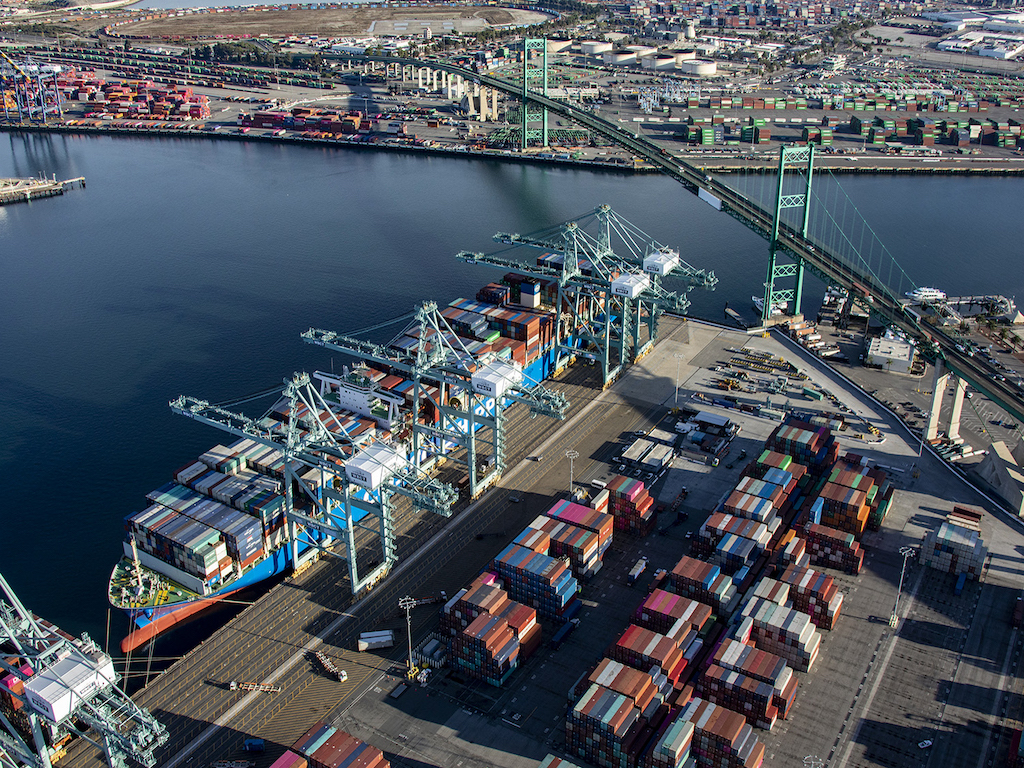Holiday spending is expected to come earlier amid a general tightening on retail purchases this year, according to the head of the National Retail Federation.
The update from NRF President and CEO Mathew Shay came during a Port of Los Angeles Monday media briefing that also included the latest cargo figures for September.
Retailers Less Concerned about High Inventory Levels
While clearing through a glut of inventory was the main headline for retailers beginning in mid-2022, Shay said most companies are now at pre-pandemic levels when it comes to inventory on hand.
“I think that’s largely played itself out now,” Shay told Port of Los Angeles Executive Director Gene Seroka during Monday’s briefing. “That’s not something that we’re hearing from our members.”
Shay said he met last week with a group of CEOs from major retailers and inventory levels were not part of the discussion.
“It wasn’t high on anyone’s list,” he said. “Our assessment is that inventory to sales ratios are really back to pre-pandemic levels, about 1 to 1.3.”
Most shippers, not looking to repeat the product shortages encountered during the peak of the supply chain crisis, shipped earlier than usual. Thus, the peak for imports already occurred earlier this year.
“We’re going to probably see gradual slowing (of shipping) as we get into the rest of the year,” Shay said. “So, I think volumes will still be strong, but maybe not quite as high as we would have predicted six or eight weeks ago. One of the behavioral changes on the retail side is that we know that the consumers are shopping earlier than ever for the holidays.”
The pullback on goods and shift over to more services spending is also part of what pushed the peak shipping season earlier this year.
The Port of Los Angeles reported Monday it processed 748,440 twenty-foot equivalent units (TEUs) in September, which was up 5.4% from a year ago and the second straight month of volume growth in L.A. after experiencing monthly year-over-year declines that began last year.
The increase in September was driven by exports, which jumped 55% to 120,635 TEUs. Imports grew 14% to 392,608 TEUs.
NRF said last week it’s forecasting households will spend an average of $875 during the upcoming holiday selling season, with nearly three-quarters of that going to goods.
“That number is higher than it was a year ago, so there’s still growth there,” Shay said. “What we come away from this saying is that consumers are resilient. They’re still powering the economy. They’re catching their breath. They’re behaving in a more deliberate way and we’re seeing spending moderate.”
Organized Retail Crime
Top of mind now for NRF and its membership is organized retail crime, with retailers seeing more than $112 billion in losses last year due to the proliferation of sophisticated crime rings.
The trade group is advocating for the passage of the Combating Organized Retail Crime Act of 2023, which would increase coordination across federal, state, and local law enforcement agencies to help combat theft.
CEO after CEO addressed or were asked by analysts about shrinkage during quarterly earnings calls this year. Nordstrom Inc. CEO Erik Nordstrom said in August theft has been a “drag on earnings.” Dick’s Sporting Goods said shrinkage impacted the retailer’s profitability in the quarter ended July 29. Target CEO Brian Cornell also said this year the level of theft the chain has experienced is not sustainable over time.
While the numbers have always been large for shrinkage, Shay said the impact of theft is now being noted beyond companies’ loss prevention teams.
“I think what people are finally starting to recognize, appreciate and understand now is how organized retail crime impacts communities, how it hurts the workers – the team members and associates in those businesses – how it impacts… customers that rely on those businesses,” Shay said.
Kari Hamanaka can be reached at kari@shop-eat-surf-outdoor.com.






